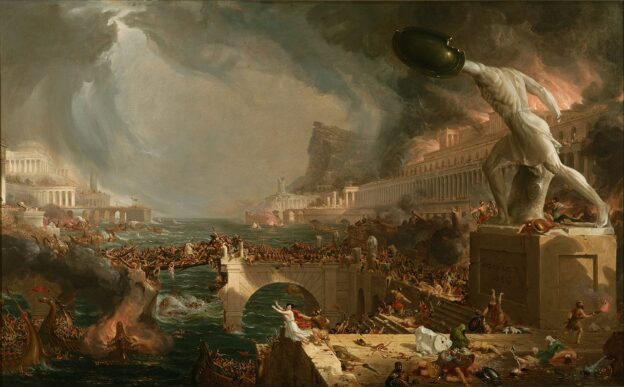Edward Gibbon’s fourth volume of his magnum opus, “The Decline and Fall of the Roman Empire”, is a deep dive into the intricate history of the Byzantine Empire. This volume, while maintaining Gibbon’s characteristic erudition and narrative flair, unfolds a story of an empire beset by external threats and internal dissensions. From the rise of Islam to the Iconoclastic Controversy, this essay aims to distill Gibbon’s key themes and provide a scholarly analysis of the Byzantine Empire’s challenges and resilience during this period.
The Byzantine Empire: A Resilient Behemoth
The Eastern Roman Empire, colloquially known as the Byzantine Empire, was not merely the eastern half of a divided Roman entity. As charted by Gibbon, it was a unique civilization, deeply influenced by Hellenistic culture, Christian theology, and Roman administrative acumen. Situated at the crossroads of Europe and Asia, it was both a bastion of Christendom against external threats and a melting pot of diverse cultures.
Byzantium and Persia: Age-old Rivals
One of the recurring themes in Volume IV is the Byzantine Empire’s perennial struggle with its eastern neighbor, Persia. These two great empires, both heirs to ancient civilizations, locked horns in battles that spanned centuries. Gibbon meticulously documents their military campaigns, highlighting the strategic importance of regions like Armenia and Mesopotamia. Yet, beyond mere military narratives, he delves into the diplomatic overtures, subterfuge, and the interplay of religion and statecraft that marked this rivalry.
The Rise of Islam and the Arab Conquests
Perhaps the most transformative event of this period, as depicted by Gibbon, is the meteoric rise of Islam. Within a few decades of Prophet Muhammad’s death, the Arab armies had managed to not only consolidate the Arabian Peninsula but also challenge the might of Byzantium. Gibbon’s account of the Arab sieges of Constantinople and the rapid fall of Byzantine territories in North Africa and the Levant underscores the unprecedented nature of these conquests.
While Gibbon acknowledges the military prowess and zeal of the Arab conquerors, he is equally attentive to the administrative and geopolitical missteps of the Byzantine leadership, which, according to him, exacerbated their vulnerabilities.
Bulgarian Threats and the Empire’s Northern Frontiers
As Byzantium grappled with challenges in the East, the northern frontiers, too, were not without threats. The Bulgarians, emerging as a formidable power in the Balkans, frequently clashed with the Byzantines. Gibbon’s portrayal of these interactions is nuanced; while he details the military confrontations, he also delves into the cultural exchanges and religious intrigues that characterized Byzantine-Bulgarian relations.
The Iconoclastic Controversy: A Divided Empire
One of the most profound internal challenges faced by the Byzantine Empire was the Iconoclastic Controversy. This theological dispute over the veneration of religious images transformed into a sociopolitical crisis, dividing the empire along lines of clergy and laity, urban elites and rural populace, and even emperors and patriarchs.
Gibbon’s treatment of the Iconoclastic Controversy is multifaceted. He examines the theological underpinnings, the political machinations, and the broader cultural implications of this schism. For Gibbon, this controversy is emblematic of the Byzantine Empire’s essence: deeply religious yet politically pragmatic.
Conclusion
In Volume IV of “The Decline and Fall of the Roman Empire”, Gibbon presents the Byzantine Empire not as a mere postscript to Rome’s greatness but as a vibrant, complex civilization grappling with a changing world. The Byzantines, with their unique synthesis of Roman, Greek, and Christian traditions, navigated the challenges of wars, religious controversies, and cultural transformations. Gibbon’s narrative, while rooted in the 18th century, beckons modern scholars to appreciate the Byzantine Empire’s intricacies and its enduring legacy in shaping the contours of medieval Eurasia.
